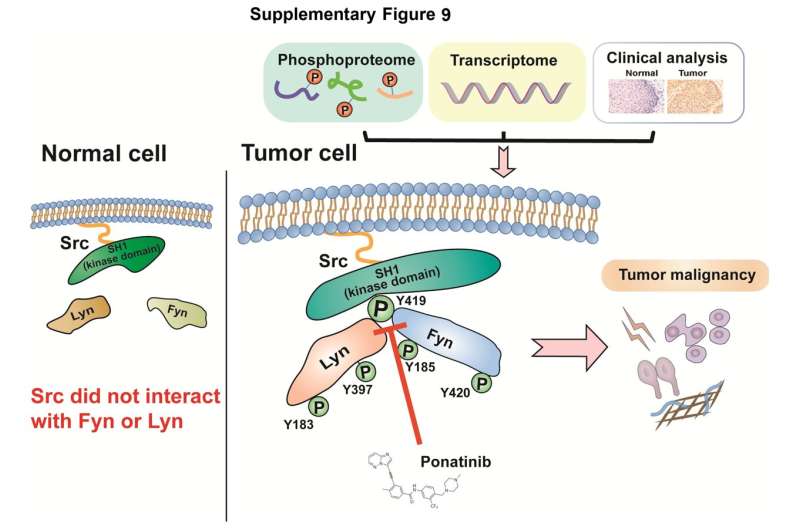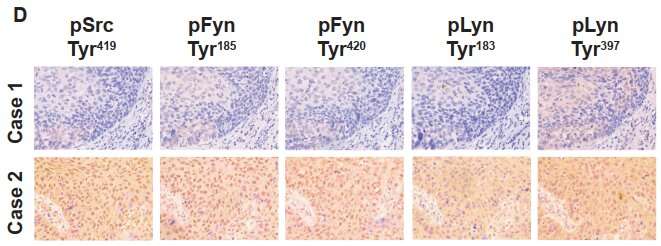This article has been reviewed according to Science X's editorial process and policies. Editors have highlighted the following attributes while ensuring the content's credibility:
fact-checked
peer-reviewed publication
trusted source
proofread
Activating targets for esophageal squamous cell carcinoma diagnosis and treatment

A study recently published in the journal Science China Life Sciences was led by Professor Qimin Zhan (Key laboratory of Carcinogenesis and Translational Research (Ministry of Education/Beijing), Laboratory of Molecular Oncology, Peking University Cancer Hospital & Institute). The group has long been devoted to molecular biology of tumors and translational medicine of tumors research, searching for prognostic markers and therapeutic targets of esophageal squamous carcinoma through multi-omics association.
In the study, the authors found that Ponatinib, the Src/multi-kinase inhibitor, inhibited Src-mediated ESCC malignancy while producing no toxic effect on normal cells, which came as a surprise and introduced deeper research.
In the current study, the authors demonstrated that inhibition of Src activity by ponatinib was effective in several malignant phenotypes of ESCC both in vitro and in vivo, while producing no inhibitory effect on normal esophageal epithelial cells (NEECs). Importantly, a combination of phosphoproteomics and several cellular and molecular biology strategies revealed that Src specifically interacts with members of the Src family of kinases (SFKs), such as Fyn or Lyn, to form heterodimers.
The interaction of Src with Fyn and Lyn subsequently resulted in a heterodimerization of SH2 (Fyn Tyr185, or Lyn Tyr183) and kinase structures (Fyn Tyr420, or Lyn Tyr397) in the tyrosine site phosphorylation, which plays a key role in the malignant development of ESCC. In contrast, Src cannot form heterodimers with Fyn or Lyn in NEECs.

The authors used RNA-seq to comprehensively detail the downstream signaling pathways that inhibition of Src activity effectively blocks. Several key tumor-promoting pathways, particularly the stemness-associated pathway, JAK/STAT pathway, mTOR pathway, and metabolism-associated pathway were clearly inhibited. "These results confirmed that Lyn and Fyn are key effectors of Src-mediated expression of molecules associated with tumor growth or metastasis," Pro. Qimin Zhan says.
In terms of clinical treatment guidance, the authors used 108 clinical ESCC samples and the immunohistochemical results showed that overactivation of pSrc Tyr419, Fyn Tyr185 or Tyr420 and Lyn Tyr183 or Tyr397 could be used as biomarkers for ESCC prognosis. The present study has shown that Src/Fyn and Src/Lyn heterodimers can be used as targets for ESCC treatment.
Pro. Qimin Zhan believes this paper could be of interest to readers in the field of cancer cell biology and precision oncology.
More information: Jing Zhang et al, Src heterodimerically activates Lyn or Fyn to serve as targets for the diagnosis and treatment of esophageal squamous cell carcinoma, Science China Life Sciences (2023). DOI: 10.1007/s11427-022-2216-x


















